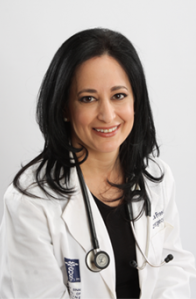College admissions is more competitive than ever, especially for students who are interested in pursuing a STEM major. Not only will you need high grades in the most rigorous math and science classes available to you, high SAT/ACT scores, and great teacher recommendation, but you will also need to demonstrate your excellence through extracurricular activities and, ideally, third party recognition. Pursuing your interest through high school STEM summer research programs is ideal.
Whether you are hoping to pursue a career in medicine, computer science, or another field entirely, setting yourself apart from the masses during high school through research is crucial.
High school summer STEM research programs and experiences will also help you gain exposure to the world of research and science, get a taste of what it’s really like to work in science, meet some of the top professionals in the field, and build lasting friendships with peers.
Top Tuition-Free High School STEM Summer Research Programs
Often the most prestigious and competitive high school summer programs are free as opposed to tuition-based programs which are often referred to as “pay to play.”
Aspiring Scholars Directed Research Program
With year-round programs, ASDRP is a program where students can gain meaningful research experience. Many students are from the Bay Area but there are also some who work remotely. Acceptance rates vary from 50 – 12% depending on the program you apply for.
Clark Scholars Program
Held every summer at Texas Tech, the Clark Scholars Program allows students to engage in meaningful research with a small group of link-minded students.
Human Oncology and Pathogenesis Program at Memorial Sloan Kettering
One of the best cancer research and treatment facilities in the country is home to a top summer program for high school students. Participants conduct independent research projects and attend training sessions and tours to learn about clinical work in the field. Through HOPP, they will learn laboratory techniques and gain real-world experience.
The program runs for eight weeks. At HOPP’s culmination, students present their research at a poster session. They will also receive a stipend for their participation.
The Jackson Laboratory Summer Student Program
This competitive summer program focuses on genetics and genomics research. Students who are at least 18 and have completed 12th grade at the start of the program work on an independent research project under the mentorship of JAX staff. At the culmination of the program, participants present their findings.
Only 40 students are selected for this 10-week program at Highseas or the University of Saint Joseph. Students receive a $6,000 stipend, and the program covers the cost of transportation, along with room and board.
MIT Minority Introduction to Engineering and Science (MITES)
Rising high school seniors, many of whom come from underrepresented or underserved communities, who are interested in engineering and science careers can explore their interests at the Massachusetts Institute of Technology (MIT). Students complete five courses across math, life sciences, physics, and humanities and participate in admissions counseling sessions, lab tours, and social events.
MIT Women’s Technology Program (WTP)
A program designed for young women the summer between the junior and senior years of high school, WTP allows students to delve into electrical engineering and computer science or mechanical engineering. This program is taught by MIT graduate students and is designed for students with little to no experience in computer science or engineering.
The National Institute of Health High School Summer Internship Program
Through HS-SIP, high school students have the chance to work side by side with leading scientists at the National Institute of Health (NIH) in biomedical research. The majority of students will work at NIH campuses in Bethesda, Baltimore, and Frederick, MD, although there are a limited number of positions in Hamilton, MT; Framingham, MA; Phoenix, AZ; and Detroit, MI. For their work, students earn a stipend.
Research Science Institute (RSI)
Hosted at the prestigious Massachusetts Institute of Technology (MIT), RSI is the first free-of-cost program to combine hands-on research with science-based coursework, blending theory and practice. Each year, 80 students undertake real, independent research projects, working with leading scientists and building their own plans. At the culmination of five weeks, they deliver conference-style reports on their work. This is an extremely competitive and prestigious program and is considered the Rolls Royce of high school STEM programs.
Roswell Park Summer Cancer Research Experience Program
High school juniors who are residents of Western New York can gain scientific research experience through this program. Students focus on one of nine areas: Biostatistics, Cancer biophysics, Cancer cellular/molecular biology, Cancer genetics, Cancer prevention/epidemiology, Health behavior/cancer health disparities, Molecular pharmacology and cancer therapeutics, Tobacco regulatory science, or Tumor immunology.
In the past, students have focused on projects like “Dissecting the Neural-Vascular link in Head and Neck Cancer,” “The Role of Heat Shock Protein in Prostate Cancer Progression,” and “Cigarette Filter Ventilation and its Correlation with Risk and Sensory Perceptions in America’s Leading Cigarette Brands.” Along with conducting a research project, participants will receive classroom instruction on cancer basics and join seminars with professionals in the field.
Simons Summer Research Program
Simons allows motivated students to participate in hands-on research in science, math, or engineering at Stony Brook University. Working with faculty mentors, these Fellows learn laboratory techniques, join real research teams, and gain exposure to laboratory equipment, while discovering what life is like at a research university. They also attend faculty lectures and events.
The program is free to attend for commuters (there is a housing fee for those who live on campus). Participants will receive a $1,000 stipend at the completion of the program.
Stanford Institutes of Medicine Summer Research Program
SIMR, an 8-week summer internship program, gives high school juniors and seniors the opportunity to conduct hands-on research under the mentorship of Stanford University faculty, postdoctoral fellows, students, and researchers.
Participants focus on a medically-oriented project in one of eight areas of research, called institutes: Immunology, Neurobiology, Cancer Biology, Bioengineering, Stem Cell and Regenerative Medicine, Cardiovascular Biology, Bioinformatics, or Genetics and Genomics. They also have the option of participating in the bioengineering bootcamp (no lab component).
For their work, students receive a $500 stipend at minimum. Grant funding is also available to support groups that have been underrepresented in the field. NB: The admissions process favors Bay Area applicants.
The Summer Academy for Math and Science
At Carnegie Mellon University, students from underrepresented communities in STEM can explore fields such as biology, physics, computer programming, and more and even earn college credit. CMU faculty and staff lead a rigorous curriculum, involving traditional classroom instruction, hands-on projects, and engagement activities, all while students develop relationships with like-minded peers from across the country.
The program is divided into two parts. During Part 1, participants engage in skills-building work virtually. In the second part, students move into residence halls at CMU and, over the course of four weeks, attend courses and meetings and present their work at a symposium and the program’s end.
Summer Science Research Program at the Rockefeller University
RNA Virus Discovery and Bioinformatics, Coronavirus Immune Response, Silkworm Biomaterials, Modeling Microbes in Milk and Cheese, and Ant Social Biology are just some of the many research tracks SSRP scholars have engaged in while working in this mentored biomedical research program at the prestigious Rockefeller University.
Open to high school juniors and seniors aged 16+, SSRP gives students the opportunity to conduct research, all while receiving guidance from Rockefeller community mentors. They will also take part in discussions, lab meetings, trainings, and career-related workshops, where they will gain skills and receive advice on navigating the world of science.
About MedEdits
MedEdits helps STEM and premedical students get into college and medical school. Our consultants have years of experience working in college admissions and serving on medical school admissions committees. Many have served as faculty members at the top medical schools in the United States.
Are you a Future STEM Major Looking for Help Getting into College or BS/MD Programs?
Schedule a Free 15 Minute Consultation with a MedEdits expert.
Paid High School Summer STEM Programs
Typically, pre-college programs that have tuition fees (often steep ones) are considered less prestigious than those that are free or offer a stipend since they are restricted to students who can afford to pay for the opportunities, although many offer financial aid. Still, many of these programs are selective and can give students the opportunity to gain skills and exposure to science careers.
Examples include:
The California State Summer School for Mathematics & Science (COSMOS)
Talented students finishing grades 8-12 have a chance to work with faculty, researchers, and scientists at major research universities in the University of California system: UC Davis, UC Irvine, UC San Diego, and UC Santa Cruz. COSMOS, a four-week residential program, is ideal for students with an interest in pursuing a STEM career.
The curriculum is hands-on and lab intensive, hosted in state-of-the-art facilities and focusing on advanced STEM topics. Students can build their skills and nurture their interests far beyond the limits of a standard high school curriculum.
Garcia Summer Research Program
Gifted rising seniors can participate in this intensive seven-week program, which blends independent, original research with formal instruction. Under the guidance of Garcia Center faculty, students, and staff, they will design their own projects.
Students also have the opportunity to continue to conduct research by participating in the Mentor Program, through which they will work with a faculty mentor throughout the year. Program alumni have been widely recognized for their research in national competitions — some have even had their work published in journals, been awarded patents, and been inducted into the National Young Inventor’s Hall of Fame.
High School Honors Science, Math, Engineering Program (HSHSP) Michigan State University
Students who take part in HSHSP pursue research in topics in the sciences, engineering, or mathematics at Michigan State University, a top 50 research university, under the guidance of renowned researchers. Participants with an interest and goals in the STEM field tackle challenging problems through one of the oldest continuously operating programs of its kind in the U.S. HSHSP encourages qualified minority students and disabled individuals to apply.
Program for Mathematics for Young Scientists (Promys)
Founded in 1989, PROMYS is a six-week residential program held at Boston University, aimed at motivated high school students wishing to explore topics in mathematics. Students receive daily problem sets and guidance and feedback from undergraduate counselors, while attending lectures, participating in advanced seminars or lab projects, and conducting their own numerical experiments.
They also collaborate with peers and get a taste of college life, living in dorms and participating in recreational activities.
The Summer Science Program (SSP)
Students immerse themselves in hands-on experimental science through SSP. Working in small teams of peers and faculty, called “living and learning communities,” they dive deep into topics like astrophysics, biochemistry, and genomics. This is the only program of its kind operated, governed, and funded by its own alumni and former faculty. It is also one of the longest-running pre-college programs, established in 1959.
Students don’t just learn about science — they practice it in real life. There are no grades; students operate under a Code of Honor, collaborating and experiencing true science work.
Independent Research
Many high schools have three year research programs in which students can enroll which can be very fruitful experiences. These programs help students identify a research interest, write to professors who are studying a topic of interest, and gain valuable research internships and opportunities. Many of these students then work with these professors throughout high school and in the summers to make meaningful contributions. This can often be the ideal way to find research experience and can also lead to strong letters of recommendation.
This work can also be entered into science competitions including regional competitions, ISEF, Regeneron (the most prestigious science competition), and JSHS. Often students can also publish research depending on the level of mentorship. This type of work can be as valuable and even more so than participating in some of the programs listed above.
Pay to Play High School Summer STEM Programs
While precollege programs can be helpful to explore your interest in various subjects, these programs are really a dime a dozen, are not competitive for which to gain admission, and don’t carry much cache in the college admissions process relative to the more competitive programs listed above. Contrary to what many students believe, participating in a precollege program at an elite university will not position you to get into that school.
Below are a sampling of science-based pay to play programs that we consider worthwhile.
- Penn Medicine Summer Program
- Research in the Biological Sciences (RIBS) at the University of Chicago
- Research in Science and Engineering Program (RISE)
- Smith College Summer Science and Engineering Program (SSEP)
- Science Internship Program (SIP)
Keep in mind that there are literally hundreds of pay to play programs many of which now follow a “mentor-based” model. These programs vary tremendously in quality and many can be a complete waste of your time and efforts so choose carefully!








